Abundance: uncommon
What: fruit
How: raw, cooked
Where: fields, borders, woods
When: summer, fall
Nutritional Value: Vitamin A, B3, C
Dangers: unripe berries can cause stomach upset, vomiting, diarrhea
Top view of ground cherry (Physalis pubescens) plant.
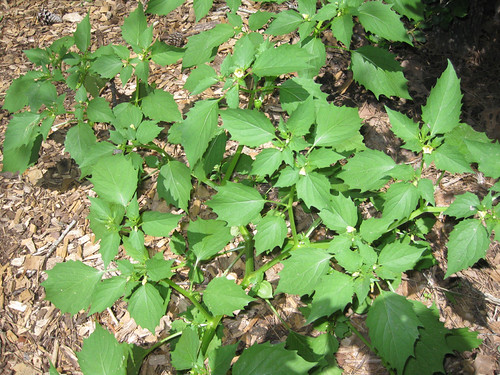
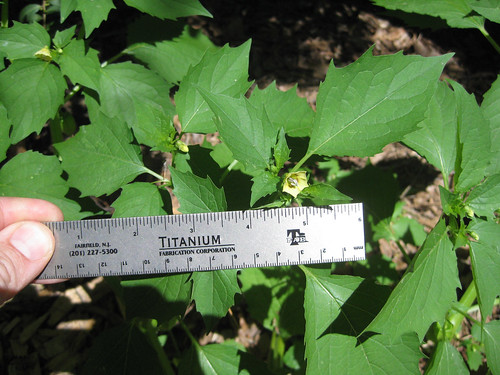
Side/under-leaf view of ground cherry plant with unripe fruit pods.

Close-up of ground cherry flower.
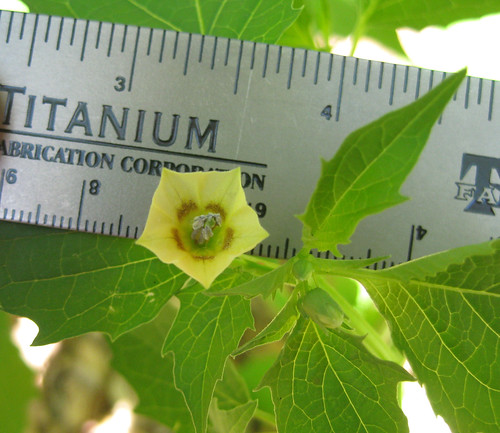
Close-up of unripe ground cherries still on the plant.
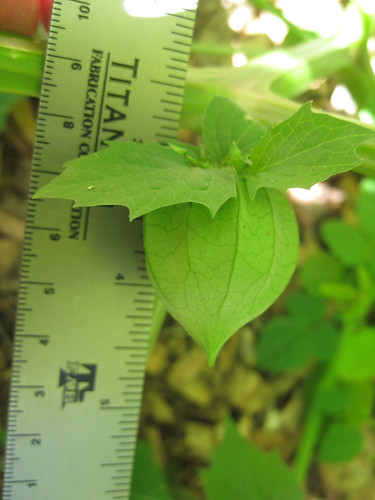
Ground cherries in November in Houston, TX. Notice how long and pointy the edges of the leaves have become.
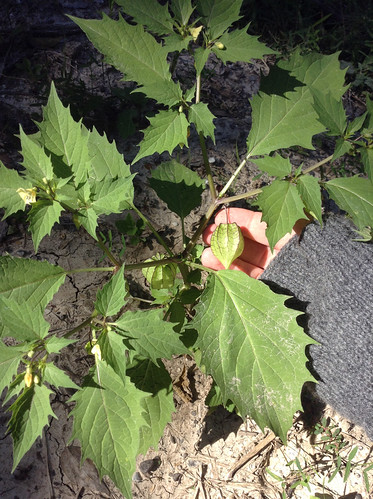
Ripe ground cherry fruit.
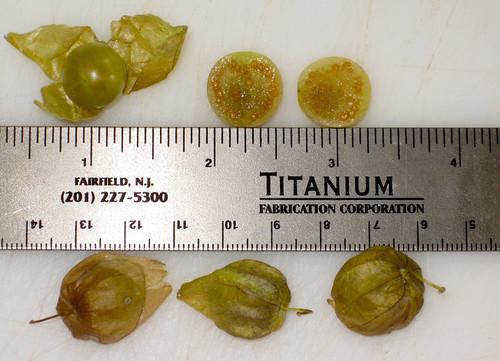
Texas distribution, attributed to U. S. Department of Agriculture. The marked counties are guidelines only. Plants may appear in other counties, especially if used in landscaping.
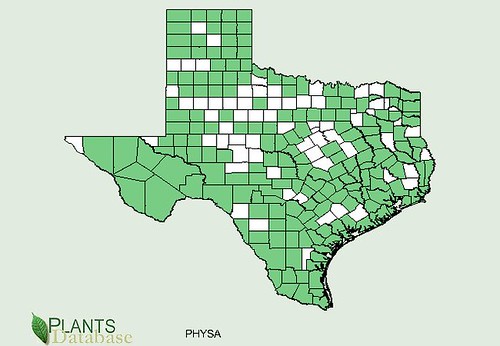
North American distribution, attributed to U. S. Department of Agriculture.
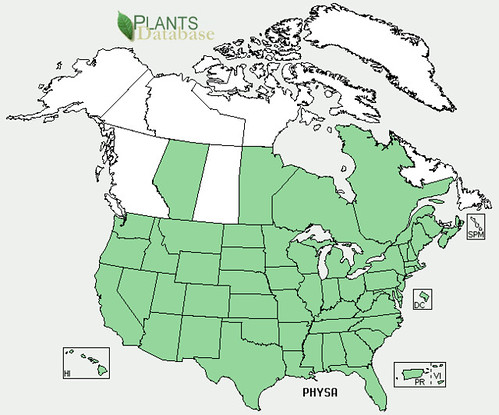
Ground cherries are members of the nightshade family, just as are their close cousins and similar tasting tomatillos. Ground cherries straddle that fine line between fruit and vegetable, and can be used both as a somewhat sour berry in tarts and other desserts as well as to make tangy sauces, salsa, and other tomato/tomatillo type foods. My mom preferred to use them as a berry in desserts, but I never really like them served that way. I think they are better in Mexican and Italian style foods.
Ground cherries easily reseed and are effortlessly grown in gardens. They do best in dappled sunlight but not full shade. If near a steady source of water such as a pond or stream they can handle full Texas sun. Loose sandy soil works best. Once the plant begins fruiting in the summer it will continue to produce up to 300 of the small, yellow berries until frost kills the plant.
The plant usually drops the fruit pod before the fruit inside is ripe. Simply pick the pod off the ground and store it in an open container on your counter until the outer pod turns from yellow to a orangish sort of color. At that point you can remove them from the husk and use them. You can leave them in their husks/fruit pods for up to three months if stored at 50F in a mesh bag.
As part of the nightshade family, these fruit have a small amount of toxicity when unripe. If eaten before they are ready they will cause very bad stomach distress.
Buy my book! Outdoor Adventure Guides Foraging covers 70 of North America's tastiest and easy to find wild edibles shown with the same big pictures as here on the Foraging Texas website.

